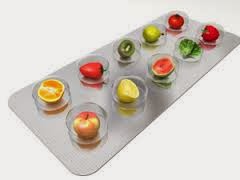ARTHRITIS TREATMENTS
When joint cartilage wears away, bone rubs against bone, causing osteoarthritis. Sounds painful? It is.Osteoarthritis seriously impairs the quality of life for 27 million Americans. Given that osteoarthritis is so disabling, painful, and common, lots of quack “cures” are out there, from shark cartilage to copper jewelry to snake venom.
But here are 13 natural remedies that research suggests may actually help ease arthritis pain.

Weight loss
The best remedy—maintaining a healthy weight, and losing weight if necessary—is not the easiest.Still, every pound you pare off means 4 pounds less pressure on your knees, says Laura Robbins, senior vice president of education and academic affairs at the Hospital for Special Surgery in New York City.
Some people will see their symptoms disappear if they lose 10 to 20 pounds, says Roy Altman, MD, a rheumatologist and professor of medicine at the University of California, Los Angeles.
Exercise
People used to think that exercise made arthritis worse, but the opposite is true—unless you’re pounding the pavement. (Runners with knee osteoarthritis should cut down on mileage, try to cross-train, and run on softer surfaces like tracks and dirt paths.)
Exercise programs should include both aerobic exercise—like walking, swimming, or biking—and strengthening exercises, such as isometric and isotonic exercises, Dr. Altman says.
Acupuncture
Many people find that acupuncture helps relieve pain and disability due to arthritis; several studies have found benefit from the procedure.“Several trials show acupuncture to be helpful for many people with osteoarthritis,” says Dr. Altman. “It’s not helpful in everybody.”
Glucosamine
“There continues to be a lot of controversy about it. There’s a fair amount of data that glucosamine sulfate is beneficial, but glucosamine hydrochloride is not,” Dr. Altman says. “Almost all of the products that are sold here in the United States are glucosamine hydrochloride. There are no trials demonstrating that glucosamine hydrochloride benefits people with osteoarthritis.”
In the studies that did find benefit for glucosamine sulfate, Dr. Altman says, patients took 1,500 milligrams once a day, which resulted in better absorption in the body than splitting the dose.
Chondroitin
Although some studies suggest that chondroitin sulfate slows arthritis progression, it hasn’t been shown to help symptoms, says Dr. Altman. Studies that found the supplement helpful used 800 milligrams or 1,200 milligrams daily.
“They’re really pretty safe,” Dr. Altman says of the supplements. “The one thing about them is there’s no major side effects. They’re fairly well tolerated.”
Other supplements
Other supplements have shown promise, but the evidence just isn’t that strong, says Dr. Altman.Industry-funded studies have found benefits for avocado soybean unsaponifiables (ASU), which are made from avocado and soybean oils, in patients with hip and knee arthritis. But such studies aren’t as reliable as those funded by groups that don’t stand to gain financially.
There’s some evidence that rose hips and highly concentrated ginger could be helpful, Dr. Altman says.
Although fish oil has anti-inflammatory properties, more research is needed.
Topical remedies
 Strong-smelling mentholated rubs and creams may make your skin tingle, but many have limited value for osteoarthritis, says Dr. Altman.
Strong-smelling mentholated rubs and creams may make your skin tingle, but many have limited value for osteoarthritis, says Dr. Altman.However, there are some creams now available that have proven benefit, he adds. Diclofenac gel, sold in the U.S. as Voltaren Gel or Pennsaid by prescription (but available over the counter in Europe), is a nonsteroidal anti-inflammatory drug that can ease osteoarthritis pain in the knees, ankles, feet, elbows, wrists, and hands. It hasn’t been evaluated in osteoarthritis of the spine, hip, or shoulder. (Dr. Altman is a consultant for Novartis, the maker of Voltaren Gel.)
Capsaicin cream
Capsaicin cream can also relieve osteoarthritis pain, and it’s available without a prescription.It’s made from the substance that gives chili peppers their heat.
Nobody knows how it works, although one theory is that the cream relieves pain by depleting the nerve ending of pain-impulse-transmitting chemicals known as “substance P” and calcitonin gene-related protein, Dr. Altman says.
Electricity
And there’s electroacupuncture, in which the provider uses needles at acupuncture points that are attached to electrodes to pass an electric charge through the acupuncture needles.
There’s some evidence that both approaches can help provide at least short-term pain relief and also ease joint stiffness.
Chiropractic
Chiropractic therapy won’t help with osteoarthritis. But what it is useful for, says Dr. Altman, is treating the muscle spasms that often accompany the condition.For example, if you have acute lower back pain, chiropractic manipulation can break up the muscle spasm and scar tissue, easing the pain.
Heat and cold treatments can also be helpful for easing these muscle spasms, which aren’t only painful, but can interfere with sleep.
Physical therapy
Most of the time you don’t need to see a physical therapist, Dr. Altman says. Still, in some cases physical therapy can be invaluable.For example, a person who is so weak that he or she has trouble getting out of a chair can benefit from physical therapy, and possibly even have PT adminstered at home.
But the therapist should be experienced in treating osteoarthritis. “Many physical therapists are used to treating stroke patients or sports injuries or other things where they’re used to pushing people a lot,” Dr. Altman says. “Physical therapy for osteoarthritis needs to be more gentle.”
Assistive devices
Shoe inserts, canes, splints, braces, and other devices that can help redistribute your weight to take the load off an arthritic joint or hip can be very beneficial, says Dr. Altman.They are particularly helpful, for example, if someone has become knock-kneed or bow-legged as a result of having arthritic knees; unloading braces can help restore normal weight distribution, reduce pain, and prevent your arthritis from getting worse.
While evidence for the benefits of shoe wedges is mixed, according to Dr. Altman, some people will find them helpful, especially if they have leg length discrepancies greater than a half-inch.














.JPG)





0 comments:
Post a Comment